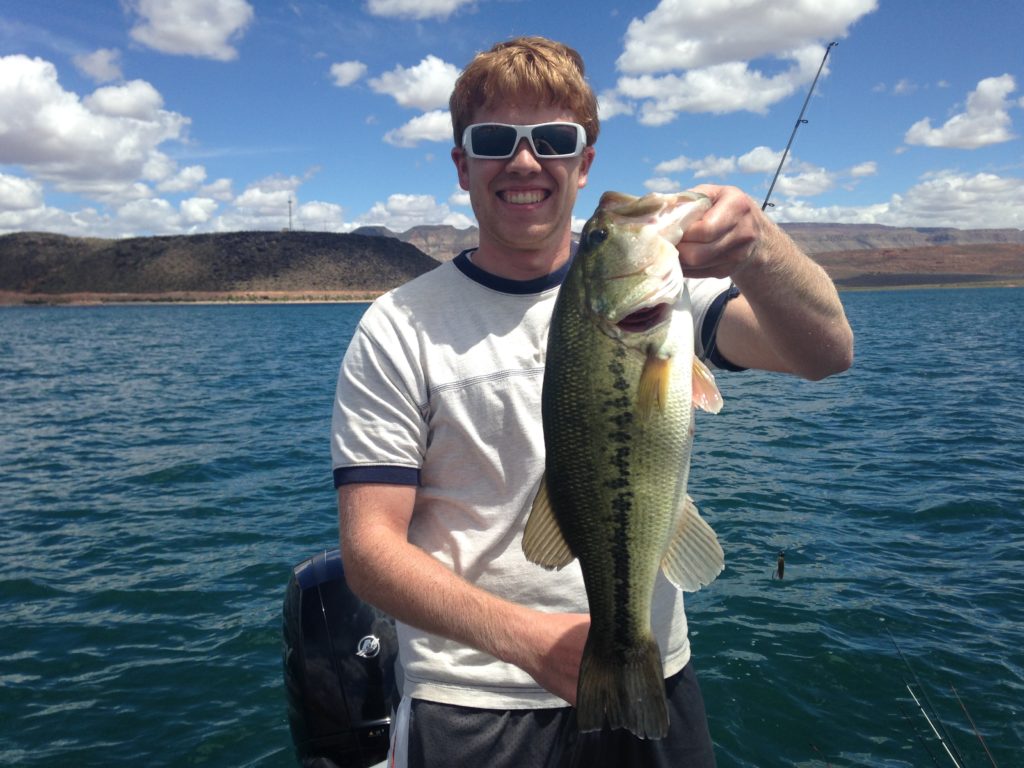



The mission with this post is to help you understand the key components for the best shaky heads to get you slaying some bass! There are a whole bunch of shaky head types to choose from for bass fishing, but what one is the best? This article will go in depth looking at the several different types of shaky heads. Plus, give you an inside look at how these shaky heads compare with some underwater footage. Enjoy!
In this article you will see all the best options to consider when it comes to shaky heads for bass fishing. Shaky heads come in all sorts of sizes, styles, and weights. Here is a list of some of the most important points to pick a good shaky head to catch fish. Things like the soft-plastic keeper. What shaky head weight you need to use. The different design features of shaky heads. What does a shaky head look like underwater. All these things outlined here will show you how to catch bass on a shaky head. Lastly, this post on shaky head fishing tips will also provide you some insights on when to use a shaky head, and a list of some great baits to use on this rig.
You will save time and money from buying the wrong shaky heads after reading this post. Plus, start catching more fish with the right ones! Leave a comment below if you have any questions about shaky head fishing. You can also check out my other post on fishing a shaky head here; Shaky Head Rig. Enjoy, and get stoked to catch more bass on shaky heads. They work great on smallmouth, spotted bass, and largemouth bass.
There are essentially two styles of soft-plastic keepers on shaky heads. The soft-plastic keeper is important because it can affect how well you hook up on fish. Plus, the type of keeper can save you from burning through baits. Your soft-plastics can really get torn up fast on a shaky head because of how well the fish usually get em. Here’s what you need to know about the pro’s and con’s of the two different styles of soft-plastic keepers.
Barbed keeper styles on shaky heads have a couple dis-advantages, and one big advantage. The barbed keeper is considered the best way to improve your hook ups. It creates more gap between your soft-plastic and the hook point. The problem with a barbed keeper is your baits can slip down the hook easier and tear your baits up quicker. Bottom line, if you want easier hook ups go with a barbed keeper. If your more concerned about ripping through a bunch of soft-plastics, the barbed shaky head keepers might not be a good option.

The twist lock style shaky head soft-plastic keeper also has some plus’s and minus’s. The main plus is you won’t tear through as many soft-plastics. The twist lock helps keep those baits in place a lot better for a lot longer. The disadvantage with the twist lock keeper is the wire on the jig head doesn’t give you as much clearance to get the hook into a bass. Another option to consider is to use a bigger size hook on the twist lock keeper to help your hook up ratio’s to avoid this problem. Bottom Line, the twist lock will save you from going through bait, but you may miss out on hooking up on a few bites.

Here’s what you need to know about what weight to use for a shaky head. First thing you need to consider is the depth you are fishing. The heavier the head the quicker you will get down deep. A shaky head is a finesse subtle offering, so going to heavy can actually back fire on the natural look of the bait. 1/4 oz is usually a good option to get down deep pretty quick. To capitalize on more bites a lighter head is better. The other great thing about a lighter jig head is your hang ups greatly reduce. For this reason, 1/8 oz or less shaky head is optimal. Maybe you want to fish a little deeper, but still stay subtle in that case go with a 3/16 oz. Ideally, you should have some 1/8, 3/16, and 1/4 oz heads in your tackle box. Then you will be covered with whatever you encounter.

Shaky heads have a few different design styles and options. Hook size is a key element for a shaky head. You need to pick a hook size based on the size of your soft-plastic. Other important features are the shape of the head. Football, stand-up, and roundball heads can influence how your bait appears in the water. Here’s a quick guide to sizing up your hook to your bait for a shaky head and what head shapes do what.
4″ – 6″ length baits = 3/0 Hook
6″ – 7″ length = 4/0 Hook
7″ + Length = 5/0 or bigger Hook
Check out the video below to see these 3 different shaky head styles in action.
Semi-straight stand up. Crawls over rocks and rolls the bait straight up, but bait falls down slowly.
Bait will land bait standing, but falls flat quicker. Cuts through grass and vegetation better than football style.
Keeps your bait standing up longer. Helps to imitate feeding bait-fish, or defensive crayfish.
This video compares 5 different shaky heads in the styles mentioned above, so you can see how they look in the water. Everybody has their own opinion of what they like, but sometimes seeing is believing. How a shaky head performs underwater can make a difference in whether a bass eats your bait or not. The more natural look you get, the better. Check them out in this video, and hear some thoughts from this pool test of these different shaky heads.
A couple things to keep in mind when finding the best bait for your shaky head. First, with heavy soft-plastics it will be harder for your bait to stand up on a shaky head. More densely salted soft-platics can be to heavy for the stand up action. Second, really fat thick worms have a hard time hooking up bass on shaky heads. Try to use baits that are slim and thin for best hook up results. Lastly, be creative! There are so many cool soft-plastics out there. Throw something unique on a shaky head to give the bass a different look to get more bites. Here’s a list with links to 10 of the best shaky head soft-plastic baits to try using.
Optimally a shaky head works best because of it’s finesse nature on a spinning rod and reel set up. Keep your bait on the bottom and the line tight. A slow drag, and an occasional hop-hop is the best way to fish a shaky head. A shaky head is a phenomenal bait for tough conditions.When all else fails throw a shaky head! Smallmouth, Largemouth, and Spotted bass will eat a shaky head worm all year long. It’s a great rig to begin with starting out bass fishing.
Finally, The links above and below in this post are affiliate links were you can pick up baits, rod’s, reels, line, and anything else I use to “Krak” some bass fishing shaky heads. Krakenbass receives a small percentage of the sales through these links. I only use links to baits, and gear I personally trust and know work. These links are supposed to be helpful for you, and not for the small amount I make for the sale of the products. I hope these products can help you “krak” some bass like they have for me. Thank you for your support!
As Always,
Stay Stoked!

You need a system to know where to go, what to use and how to work your lures to catch more bass in every situation.
Use this lure color selection chart and perfectly match the color of your lure to what bass are wired to eat without trial and error so you can catch the monsters!
Discover how to perfectly match the color of your lure to what bass are wired to eat so you can catch the monsters!
This is how to entice bass to bite and catch bass on every fishing trip!
Discover how to perfectly match the color of your lure to what bass are wired to eat so you can catch the monsters!
3 Responses
Would love to always get updated great website!
Great content as always JB!!! I feel like I am drowning in so much information and not enough time to get out there and try stuff
I hear you. It’s a jungle for sure. Just keep it simple. There are a lot of things that can catch fish. I’ve found the finesse stuff is usually the most consistent.